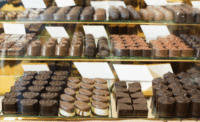Driven by taste trends and functional properties, the food inclusions market is projected to grow annually by 8 percent to hit $15.78 billion in 2023, according to new data from Research and Markets.
The demand for food inclusions in the bakery, chocolate and confectionery segments is expected to rise, as inclusions offer uniqueness to products and promote consumer indulgence. However, use of inclusions increases the final price of the end product, serving as a restraining factor for the growth of the food inclusions market.
Chocolate inclusions, the research firm suggests, add gloss and enhance the taste of product, but the popularity of fruit and nut flavors among consumers has fueled the growth of this segment in the food inclusions market.
Fruit inclusions are among the most used among all inclusions. They provide color and texture, along with taste and other sensory experiences that make them highly appealing to end consumers. Nut inclusions, owing to their taste popularity, sensory properties and consumer preference, also account for a significant consumption in the food inclusions market.
The U.S., Canada and European countries offer the largest market for food inclusions used in bakery products. With consumers in these regions demanding something different in everyday unflavored and flavored bakery products, inclusions add uniqueness and boost indulgence. In addition, growing consumer willingness to try variants in bakery products is expected to drive the usage of food inclusions in this segment.
Nonetheless, the Asia-Pacific region is projected to have the fastest-growing market for bakery product inclusions. The overall economic growth in the Asia Pacific region has led to rapid urbanization and industrialization. Further, innovations in the food and beverage segment; Westernization of consumer diets and consumption of processed and packaged food; growing disposable incomes; and willingness to spend on premium products, are expected to drive the usage of food inclusions in the bakery products segment.







